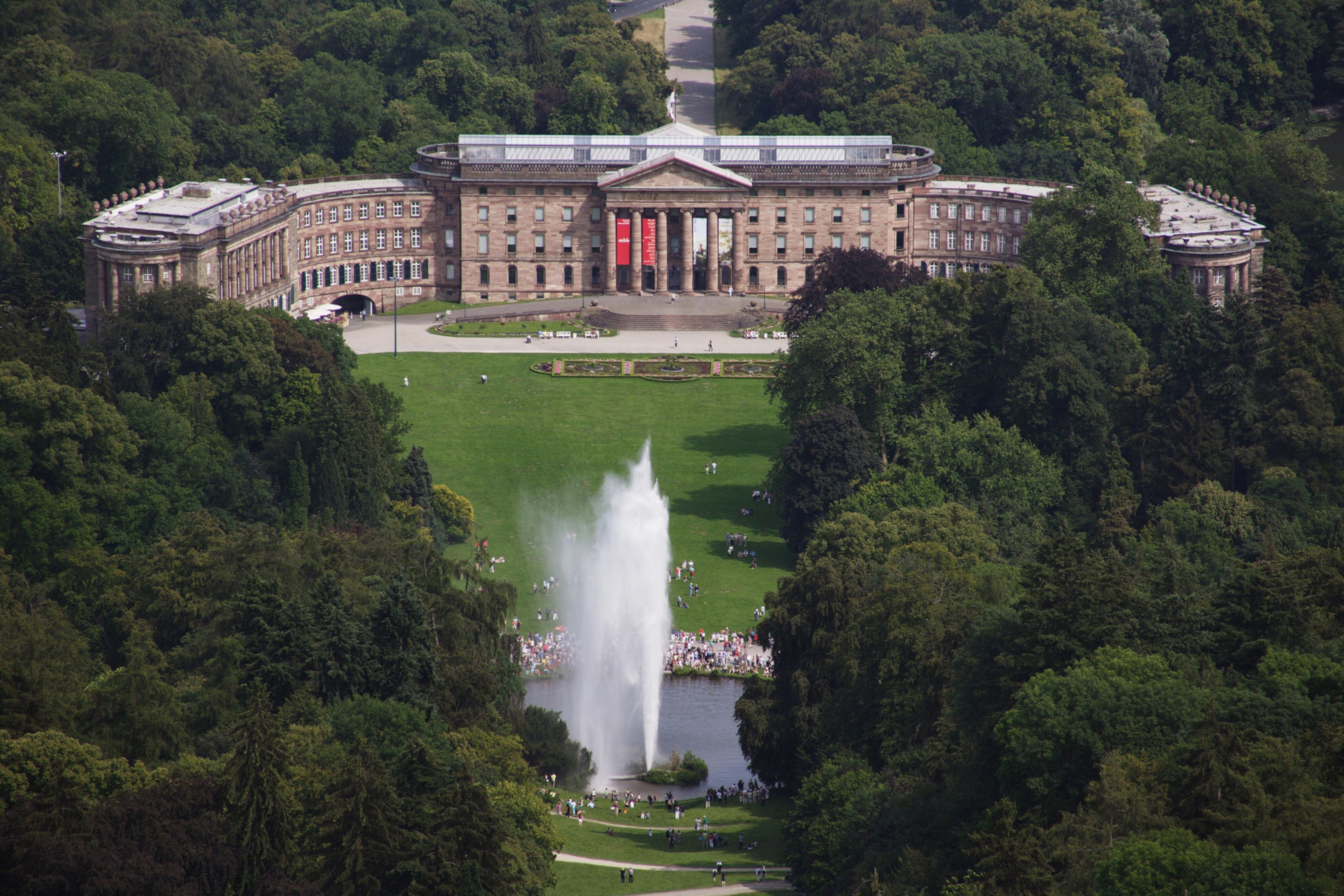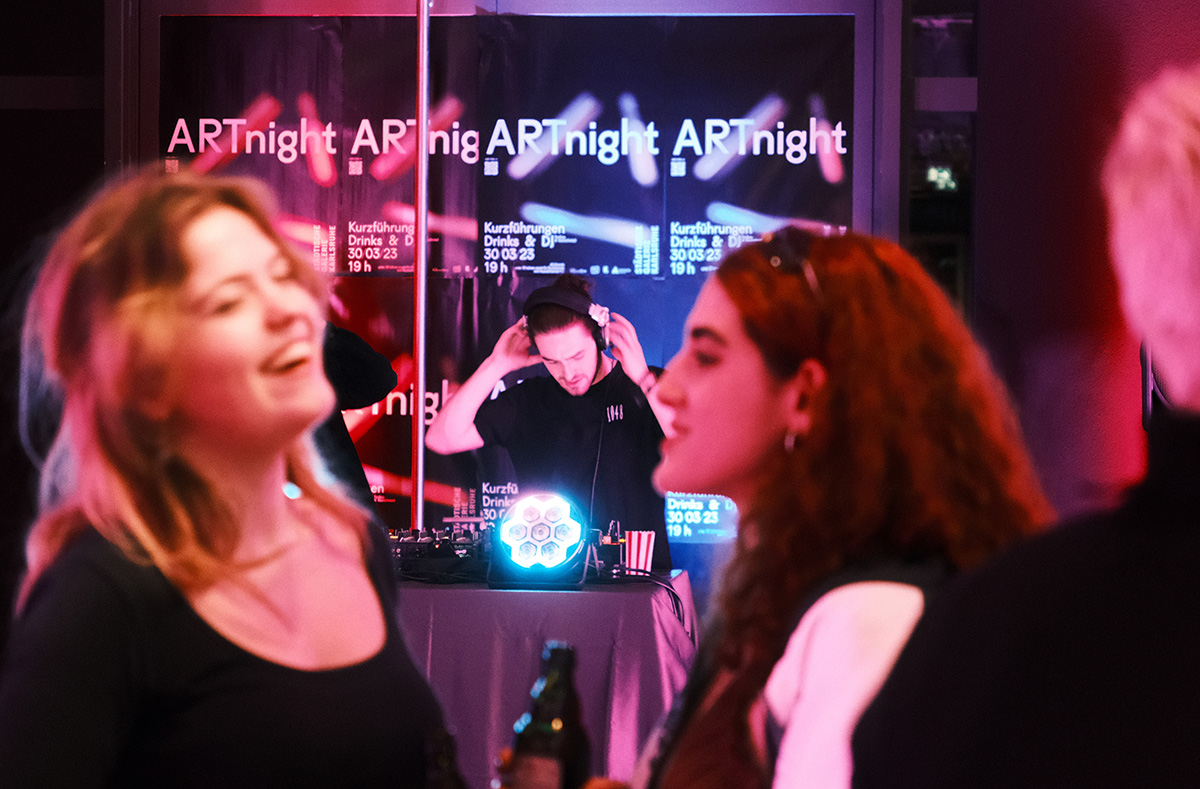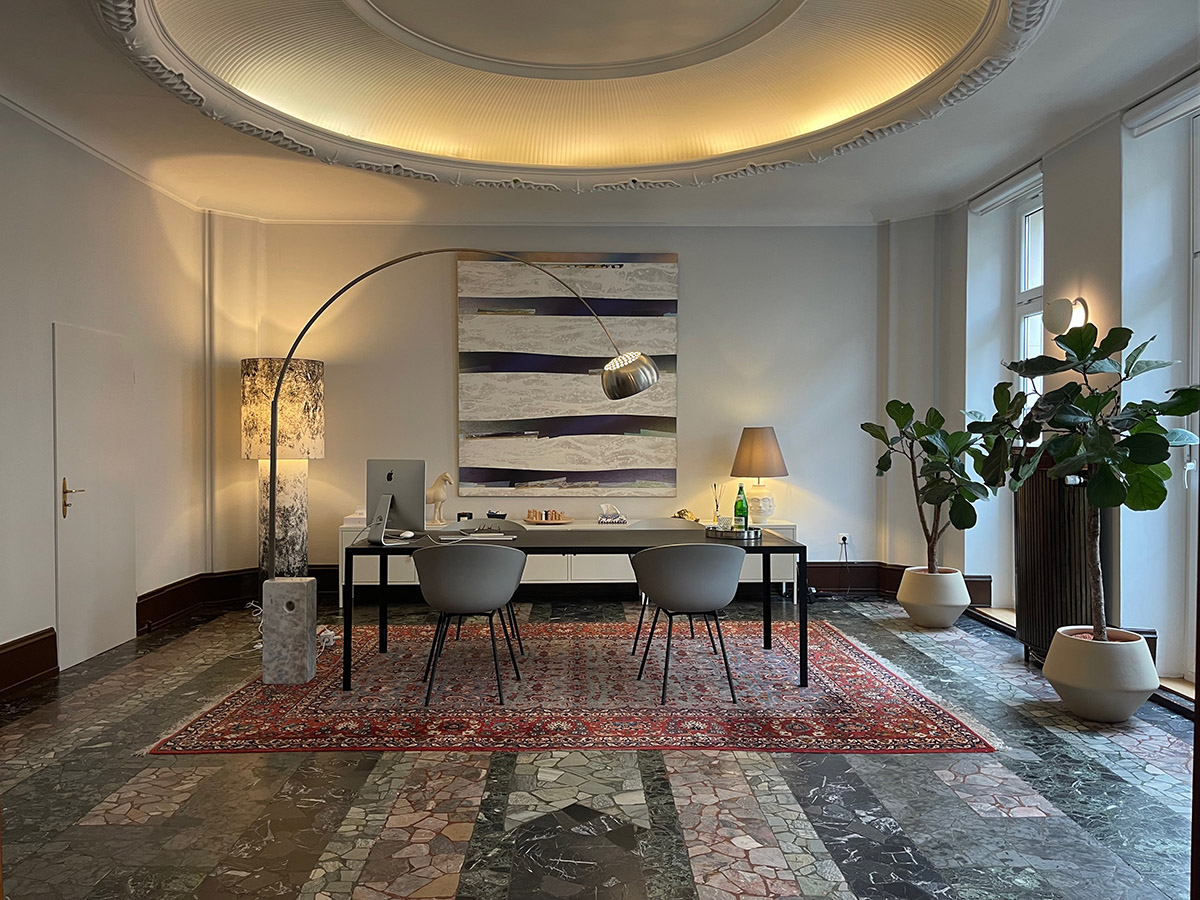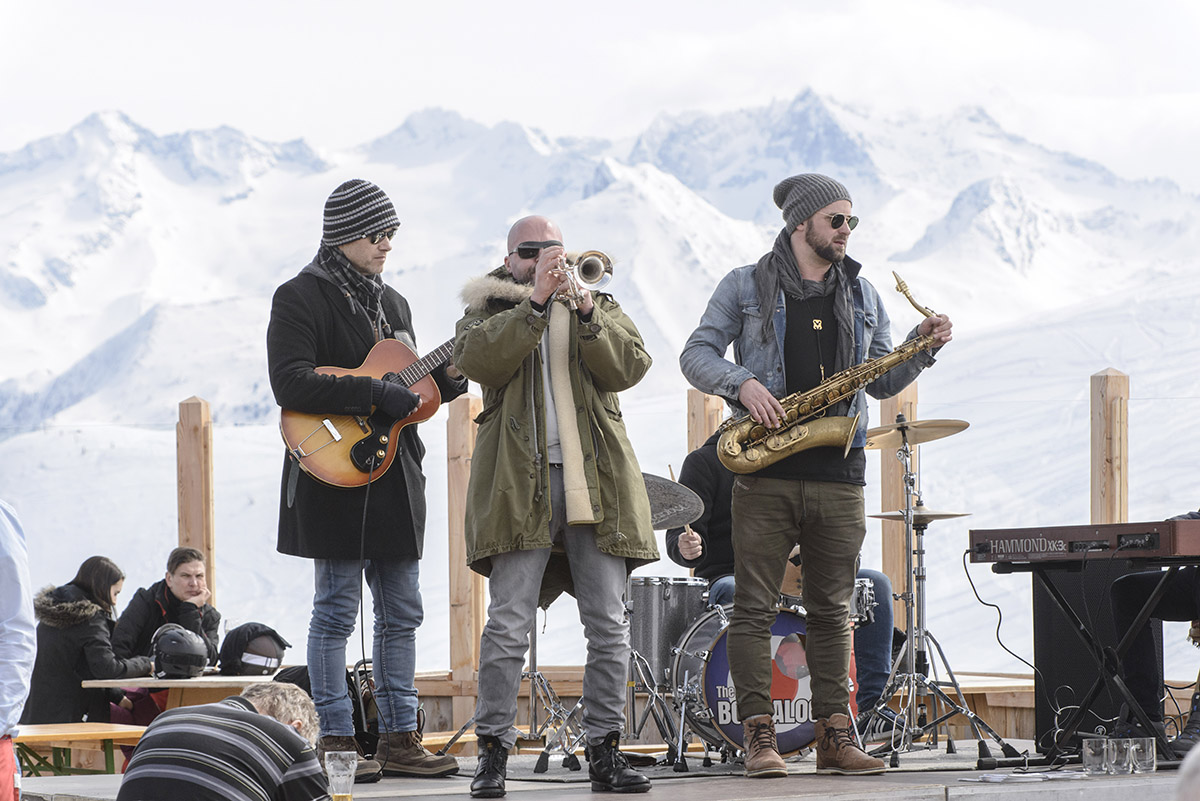North Hesse’s gemstone: Bergpark Wilhelmshöhe

Bergpark Wilhelmshöhe, situated in the German city of Kassel, is the result of 300 years of creative landscaping. The luscious landscape spans from the imposing Hercules Monument, to the 250-metre-long water cascades, to Wilhelmshöhe Palace itself with further water features and an inspiring landscape ranging from Baroque design to English landscaping influences.
The entire expanse, including the water catchment area, measures 560 hectares (5.6 square kilometres). Regarded as one of the largest in Europe, the park forms Germany’s 38th World Heritage site. The UNESCO committee decided to inscribe the Bergpark’s Hercules Monument and water displays on the list of the world’s cultural and natural heritage in June 2013, acknowledging the property as a unique cultural landscape. The selection was made on the base of the Bergpark’s water features posing “an outstanding example of the art of monumental water engineering practised in the era of European Absolutism”. Furthermore, the Hercules statue stands as the finest monumental sculpture of Early Modern times, both technically and artistically. The committee concluded that nowhere else in the world has there ever been a hillside park layout quite like the Bergpark Wilhelmshöhe, of comparable size and featuring “water architecture” as accomplished.

Until 1866, the castle and grounds served the noblemen and electorates of Hessen-Kassel and then as the Prussian King’s and German Kaiser’s summer residence. The Wilhelmshöhe Palace today houses an Old Masters Picture Gallery regarded as one of the most important of its kind, an antiques collection taking the visitor to the ancient Mediterranean region and a unique display of more than 60,000 historical prints and drawings. The latter contains delicate objects which can be explored after making an appointment.
The internationally admired water features, with their multiple cascades and fountains, provide a one-of-a-kind visual experience, no doubt presenting the most sublime of Kassel’s touristic attractions. The 18th century’s baroque layout, reaching from the Hercules Statue downwards, was later complemented by a design orienting itself on the English landscaping tradition. Visitors can follow the sights starting at the Hercules Plateau, wandering by the baroque cascades into the park itself, towards a scenery of thundering waterfalls and Romantic water features including a 50-metre-high geyser. Currently, the tender tuff stone of the baroque constructions is subject to careful and considerate restoration work while the water displays are in full operation.
The Wilhelmshöhe Palace was built from 1786 onwards, starting with the south wing and the Weissenstein Wing, followed by the Chapel Wing and finally the Corps de Logis. During the 19th century, the whole complex was united by connecting buildings to eventually form the palace’s layout as seen today.

The Hercules Monument is the pride of the Kassel citizens. The massive identity-lending structure with the eight-metre-high statue on top can be seen from any point in the city. The adjacent cascades present the starting point of the baroque water features leading downhill into the park. The fragile statics of the monument had to be fixed multiple times, with the last successful restoration taking place over a span of two years, from 2006 to 2008. Since then, the massive octagon and the pyramid have also been under reconstruction, with a special focus on the comprehensive restoration of the strongly affected tuff masonry.
The Lion’s Castle, built around 1800, is another special attraction on the grounds of Bergpark Wilhelmshöhe. The picturesque setting works as an imposing eye catcher within the park’s large expanses, presenting the ideal image of a medieval knight’s castle.
Bergpark Wilhelmshöhe is open to visitors all year round and free of charge. There are guided tours for those wishing to visit specific features such as the Hercules Monument or the water displays, conducted by guides from Museumslandschaft Hessen Kassel, Kassel Marketing. Specialist tours offer a look behind the scenes of the Bergpark and its water features, providing visitors with detailed information about the technology and historical peculiarities of the World Heritage property.

Next year marks the 300th anniversary of the Hercules statue. The most prominent landmark of North Hesse will be honoured with a range of festivities, starting with a special exhibition in spring, organised by the Museumslandschaft Hessen Kassel institution. The exhibit will focus on the historical context of the monument within the cultural landscape of Wilhelmshöhe Park and will present a selection of contemporary artists’ works connected to the theme. A grand party for visitors of all ages is planned for 4 June, 2017 in the Bergpark itself.
If you are planning on a visit, apart from enthusiasm you should bring solid shoes to fully enjoy the sites, especially the footpaths along the multiple cascades and water displays. However, some of the sites can also be reached by bus. The water features can be admired from May to the beginning of October. While visiting North Hesse, Wilhelmshöhe Bergpark provides a unique experience you should not miss out on.
TEXT: CORNELIA BRELOWSKI | PHOTOS: ARNO HENSMANNS, COPYRIGHT: MHK
Subscribe to Our Newsletter
Receive our monthly newsletter by email




